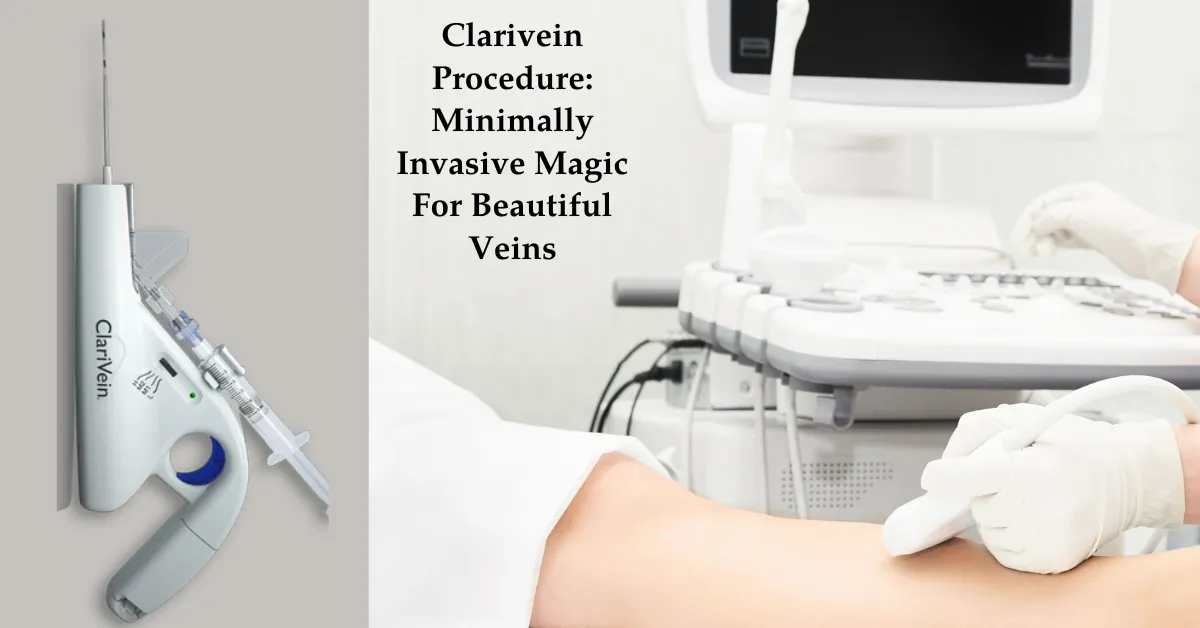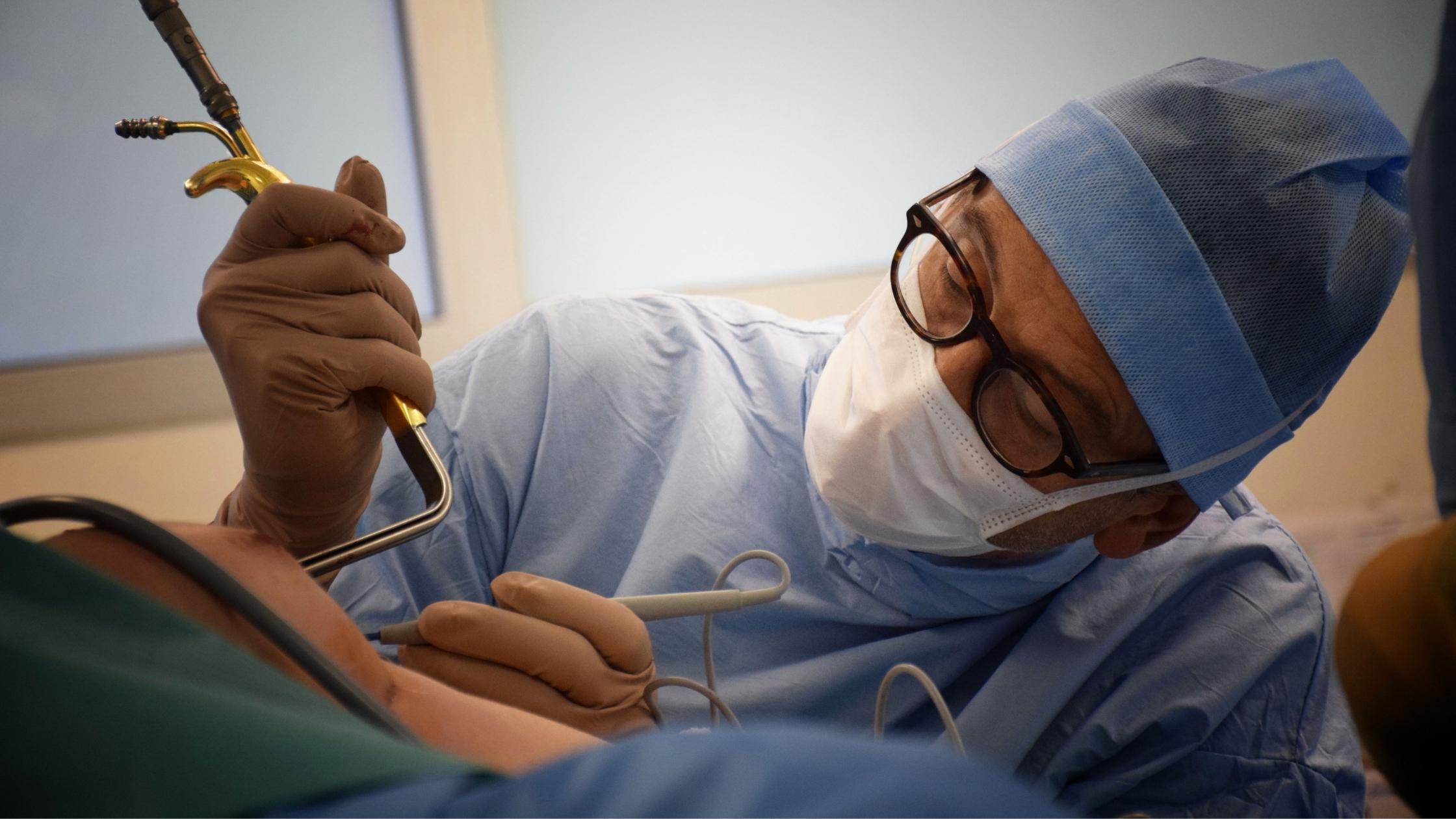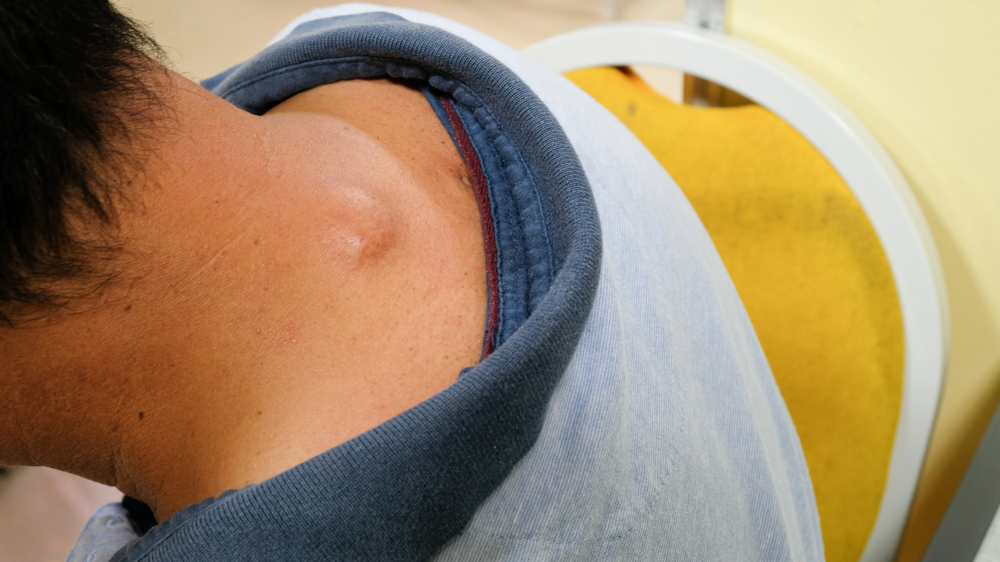In the dynamic world of medical advancements, the ClariVein procedure emerges as a cutting-edge solution for varicose veins. Marrying the precision of mechanical intervention with the efficacy of chemical treatment, ClariVein presents a minimally invasive approach, revolutionizing the realm of venous treatments.
With reduced recovery times, diminished post-procedure discomfort, and a track record of promising outcomes, this innovative method is rapidly becoming the first choice for patients and physicians alike, seeking a balance between effectiveness and patient convenience.
We delve deep into this procedure’s nuances, offering insights into its benefits and how it’s changing the lives of many individuals.
What Is A ClariVein Procedure?
The ClariVein procedure is a modern, minimally invasive method for treating varicose veins. Instead of relying on heat or laser energy, as many other treatments do, ClariVein uses a combination of mechanical and chemical means to close off the problematic veins.
ClariVein Procedure: How It Works
The ClariVein procedure is performed under local anesthesia, making it a comfortable and relatively painless experience for patients. Once the area is numbed, a small incision is made to access the affected vein.
1. Mechanochemical Ablation (MOCA)
The central principle behind ClariVein is mechanochemical ablation (MOCA). It involves the use of a rotating wire inside the vein combined with the delivery of a sclerosing agent. The wire mechanically disrupts the vein lining, and the chemical agent causes the vein to shrink and close.
2. Catheter Introduction
A specialized catheter with a rotating tip is inserted into the targeted varicose vein, usually with the assistance of ultrasound imaging.
3. Delivery of Sclerosing Agent
Once positioned correctly, the rotating tip starts to spin, and a sclerosing solution (often sodium tetradecyl sulfate or polidocanol) is simultaneously infused. This double action – mechanical disruption from the spinning tip and chemical reaction from the solution – causes the vein to collapse and close.
Over time, the body naturally absorbs the closed vein, redirecting blood flow to healthier veins. The procedure generally takes less than an hour to complete, and patients can usually return to their normal activities within a day or two.
ClariVein Procedure: Advantages
- Less Pain and Bruising: Because ClariVein doesn’t use heat (like laser or radiofrequency ablations do), there is less risk of causing injury to surrounding tissues, leading to reduced pain and bruising post-procedure.
- No Need for Multiple Anesthetic Injections: Traditional heat-based methods often require multiple anesthetic injections or tumescent anesthesia to prevent pain. With ClariVein, a single local anesthetic entry point is typically sufficient.
- Fast: The procedure itself is quick, often taking only a few minutes per vein.
- Immediate Return to Activities: Patients are often able to resume their normal activities straight off after the procedure.
ClariVein Procedure: Potential Disadvantages
- Not Suitable for All Veins: It may not be effective or suitable for very large or tortuous veins.
- Numbness: Some patients might experience temporary numbness due to the sclerosing solution affecting nearby small sensory nerves.
- Vein Inflammation: There’s a possibility of phlebitis, an inflammation of the vein. However, this is also a risk with other vein treatments.
- Limited Long-Term Data: There’s less long-term data available for ClariVein compared to other, more established methods.
Ideal Candidates For The ClariVein Procedure
While the ClariVein Procedure offers numerous benefits, it’s essential to understand if you’re the right candidate. Generally, individuals with symptomatic and lumpy varicose veins, those seeking cosmetic improvements, and those who haven’t found relief from conservative treatments can benefit immensely. It is mainly used to treat varicose veins and venous reflux disease of the legs.
However, always consult with a specialized practitioner to determine your suitability.
Post-Procedure Care And Maintenance
After undergoing the ClariVein treatment, it’s crucial to adhere to the post-procedure guidelines provided by the practitioner. These often include wearing compression stockings for a certain period to facilitate healing and reduce any potential swelling or bruising, avoiding strenuous activities for a specified period, and attending follow-up sessions to monitor the healing process.
Staying active and walking is also typically encouraged to support optimal blood circulation.
ClariVein Treatment Cost
The cost of the ClariVein procedure can vary widely based on several factors:
- Geographic Location: Where you live or where you choose to have the procedure can impact the cost. Procedures in metropolitan areas or in countries with higher living standards may be more expensive than in smaller cities or regions.
- Medical Facility: Costs may differ depending on whether you’re treated in a hospital, a specialized vein clinic, or a doctor’s office.
- Physician’s Experience: Highly experienced vascular surgeons or vein specialists might charge more for their expertise.
- Extent of Treatment: The number of veins being treated and the length of the veins can influence the overall cost.
- Insurance Coverage: Your out-of-pocket costs can vary depending on your insurance plan and whether the procedure is deemed medically necessary versus cosmetic. Insurance might cover a significant portion of the costs if it’s considered medically necessary.
- Additional Costs: You may also have to factor in other expenses, such as consultations, post-procedure medications, compression stockings, and required follow-up visits.
The out-of-the-pocket cost of ClariVein in the U.S. could range from $1,500 to $3,000 or more per leg, but these figures can change. It’s crucial to consult with a vein specialist or clinic in your desired treatment location for the most accurate and up-to-date cost information.
Remember, when considering any medical procedure, it’s essential to weigh the benefits and potential risks, not just the cost.
Comparing ClariVein Procedure To Other Varicose Vein Treatments
ClariVein, Endovenous Laser Ablation (EVLA), VeinGogh, and surface laser vein therapy are diverse methods employed to treat varicose and spider veins.
ClariVein uses a rotating wire and a sclerosing solution to shut problematic veins, offering minimal invasiveness and swift recovery, though it may not suit very large or twisty veins. EVLA employs laser energy to heat and close veins. While effective and backed by limited data, it can lead to more post-procedure discomfort due to the need for tumescent anesthesia.
VeinGogh, using Ohmic Thermolysis, is tailored for smaller spider veins, providing quick and minimal discomfort treatments. Still, it’s not suited for larger varicose veins. Finally, surface laser vein therapy, a non-invasive technique, targets smaller veins from the skin’s surface but can be less effective for certain veins and may result in skin burns or discoloration.
The optimal treatment often hinges on vein size, location, and individual patient factors, underscoring the importance of consultations with vein specialists.
Is The ClariVein Procedure Right For You?
Varicose veins can be both physically and emotionally distressing, but the ClariVein procedure offers a revolutionary approach to their treatment. With its combination of mechanical agitation and chemical sclerosant, this procedure effectively eliminates varicose veins, providing long-lasting relief and improved aesthetics.
The ClariVein procedure stands out for its minimally invasive nature, shorter recovery time, and high success rates. However, it is crucial to consult a qualified specialist to determine if this procedure suits your specific case. Consider other treatment options, compare their pros and cons, and make an informed decision that resonates with your circumstances and preferences.
References
https://www.bumrungrad.com/en/treatments/clariVein-treatment-for-varicose-veins
https://austinvaricosevein.com/clarivein-vein-treatment-austin-texas/
https://www.usaveinclinics.com/treatments/varicose-vein-treatment/clarivein-treatment/









